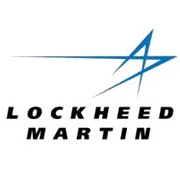There are several key elements, which make up the F-35 cockpit.
The first is the panoramic cockpit display, a large 20 by 8-inch piece of glass that provides the pilot a big picture view of the battlespace. While it’s not quite as flexible as a Microsoft Windows desktop, it is similar. The pilot can change sizes, locations, and content of windows, including a large window with a tactical situation display. The display can be manipulated through the touchscreen, cursor hooking, or voice control.
The Tactical Situation Display (TSD) is where the output from the fusion engine is displayed. Now instead of a pilot manipulating a disparate set of control panels and interacting with a separate display per sensor, fusion presents a single integrated operational picture on the TSD.
Fusion assembles an easy to interpret picture of the battlespace. It correlates and fuses all of the information from the onboard sensors as well as offboard datalinks and synthesizes a very simple to understand picture in front of the pilot on the TSD.
The resulting picture is 10 inches by 7 inches, or 70 square inches of space. The pilot can have up three different TSDs with two being displayed simultaneously. F-35 pilots will all see the same fused picture on their displays. As an individual airplane builds the picture, it is across the high bandwidth data link (the Multifunction Advanced Data Link or MADL link).
In legacy airplanes, pilots used radios to provide the communication links and to shape the collective understanding of the battlespace. With the F-35, it is the Common Operational Picture or COP that is shared visually.
Another aspect that enhances awareness is the use of the same symbols across the service and international fleets of F-35s. In legacy fighter cockpits there are often different and unique symbol sets. There’s a lot of learning and a high potential for misunderstanding as pilots communicate. Whether pilots are flying an A, B, or C model, they use the exact same symbol set. With the F-35, pilots are speaking the same language – no matter their service or nation – and using the exact same terms to describe what they’re seeing and how they’re interacting with the display.
It’s very graphical and very clear to the fleet. Its simplicity and standardization will enable ground commanders to easily use the pilot’s picture above for an improved perspective on the battlefield.
This benefit will allow pilots to exchange data with command and control on the ground.
In an era where working with allies is a core requirement, the F-35 is a key coalition enabler, and the common cockpit will be a critical aspect of the integration process. With current fleets when pilots conduct Red Flag exercises with allies, when they participate in debriefings, they’re all seeing a different picture in their displays. And with the F-35, that all changes. The F-35 allows pilots to see the same picture, ensuring they’re on the same page.
The helmet is an extension of the panoramic cockpit display. The head up symbols are like those used head down. It blends seamlessly with what’s head down and heads up. In addition to symbology, the pilot can select imagery from the distributed aperture system. This imagery is captured from sensors surrounding the aircraft, giving the pilot 360 degrees of situational awareness. Simply put, the pilot can use the helmet to look through the airplane and into the battlespace.
Currently, the helmet is working well but with any new technology there are developmental challenges. Mitigation pathways for the issues facing the helmet have been developed and are being implemented. The fact is that the helmet is already in use and the reviews from the pilots are overwhelmingly positive. One pilot went so far as to say, “I could fly the whole mission with a helmet bag over the top of my head and just look through the sensors and fly the airplane safely.”
Another pilot recently stated, “I wouldn’t go back to a fixed HUD (Head-Up Display). It is clear that the potential of the helmet and what it’s going to be able to do for the war fighter is overwhelmingly positive and I would never want to go back.”
Legacy aircraft have fixed HUDs, this is a combiner glass that sits on top of the glare shield onto which symbology is projected. All of that is gone from the F-35. Symbology is now projected on to the helmet’s visor.
The step from a third generation fighter like the F-4 that did not have a HUD to the fourth generation fighter like the F-16, which did, was significant. No pilot would ever go back to not having a HUD.
In the same way, pilots experiencing the legacy HUD to the F-35 approach do not want to go back either.
In the F-35, the helmet gives you a HUD everywhere the pilot looks. The pilot can look straight up, straight down, left, right or even through the airplane’s structure and get all the benefits of a HUD everywhere. It’s a huge extension of technology that provides a significant combat capability. This capability alone will transform how pilots conduct close air support with Joint Tactical Air Controllers on the ground.


